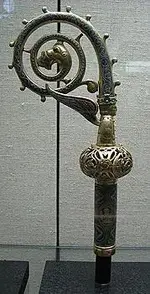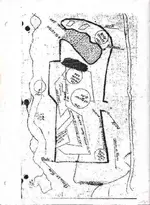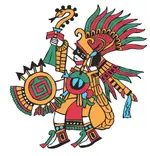Hola amigos;
At the risk of running entirely off the rails (topic-wise) have to add a bit more.
First, until and unless someone finds, retrieves and shares the information on a stash of treasure hidden in the Caballos, all of this debate on its ORIGINS is pure
speculation.
Second - Real de Tayopa wrote:
Did you make a typo there amigo? As far as I could determine, Tayopa was first discovered in
1602 by two men whom accompanied Captain Hurdaide's punitive expedition into that country. I have never seen any reference to Tayopa prior to that date, nor any mention of its discovery being older than 1602-3.
Next -TIMELINE. Think about that - it was mentioned that a Hapsburg sword was found among the treasure in Victorio peak - the Habsburgs only involvement in Mexico dates to the 1860s, Emperor Maximilian. At that time the Jesuits were hardly active in Mexico. Also what on Earth would Jesuits be doing with an Imperial sword in the first place? Remember the Jesuits got run out in 1767, Maximilian arrived in Mexico in 1864.
Don Jose bless you amigo, but you,
yourself posted virtually all of the information found on NP's "lil map" and have even just mentioned that you published it on these forums. NP may not even know the origins of that map, it could very well be something reverse-engineered, using YOUR own information to create. Anyone that has followed your posts over the years could have made it fairly easily.
Now on the
Source of the proposed treasure of the Caballos - I have to
respectfully disagree that the ONLY possible source for the treasure would have been Tayopa. Remember a French explorer that reached New Mexico, wrote that there were then (1600s) SO many silver mines that a great many were laying idle, for lack of a market for the silver! The news of the terrific silver strikes in NM in the 1600s reached all the way to Canada and the court of the king of France. Records from prior to the 1680 Pueblo rebellion were almost entirely destroyed, but pack trains of silver were shipped SOUTH from NM into Mexico for decades, and those Spanish treasure
fleets were not ONLY loaded with gold and silver from Tayopa. Now remember that the Vic peak treasure MAY date to the 1860s, and many other precious metal production areas had come into being, including the fabulous mines of Parral in Chihuahua for one example of many. Now add in the story of Padre LaRue and his gold mine - are you willing to dismiss that story out of hand, as IMPOSSIBLE to be the true source of any treasure found in the Caballos? Not to diminish Tayopa in any way, but really it is hardly the ONLY possible, and certainly
not the
most logical source for a Caballo treasure.
Real de Tayopa, you avoided the point about Flipper and that Tayopa inventory.
The point is that IF the treasures of Tayopa were getting shipped way up north, into the heart of hostile Apache country, and in the Franciscans domain (religious boundaries for the Orders)
then that Tayopa inventory should not exist for Flipper to have found it. The fact that he DID indicates that
treasure was being massed and stored AT TAYOPA, hence the NEED for an inventory of it, so that when it was to be retrieved, a checklist (so to speak) could be done to determine if anyone had stolen or otherwise lost any part of it. I see no reason to suspect that inventory was moved at all, ever. IF it were, then that inventory document should have been destroyed and
not preserved.
In fact from the Jesuits own letters (private) it becomes readily apparent that
thieving was a known problem, <even within their own Order> that they were well aware of their "enemies" looking for anything to blacken their names and reputations, and it would make perfect sense for any large treasure to be safely hidden and stored AT a Jesuit mission location or perhaps a college (less likely there, as too many Spaniards visited them) where "their" Indians could keep watch and protect the valuables. I propose that is exactly what occurred at Tayopa, hence that fascinating inventory found by Flipper. Remember what occurred at San Xavier del Bac - an impressive silver treasure was seen by many visitors, only to be hidden away, brought out again when the Jesuits returned, then hidden away again during the Civil war and lost from then on.
The Indians themselves were being entrusted to keep and protect that treasure! I see no reason to think that it would have been any different at Tayopa, which had (if memory serves) a number of Opata Indians among the people living there, whom were considered highly trustworthy and faithful to the Jesuits.
Sorry if my disbelief in this theory (and the 'Lil map') bothers you amigo, no offense intended just that I fail to see what is so compelling about it. In fact to me it appears that this theory is
highly unlikely and illogical in the extreme. Can you provide any evidence of any other Jesuit treasure being stored in the domain of the Franciscans, their greatest competitors? Remember they were not all that friendly to each other (as Orders) and there is clear jealousy between them.
Now toss in that Hapsburg sword, which would almost certainly date to the time of the Second Empire (
1864-67 a century after the Jesuits were expelled) AND that the Emperor made some effort to ship the treasury of the state along with his own personal fortune out of the country, meaning that Vic peak treasure could have originated with Maximilian. That sword should not be among the things found, IF that treasure <Vic peak> came from Tayopa. I see no reason to think the Caballos treasure must then have come from Tayopa, so far away and with so many issues.
Apologies again for the heading-off-into-the-weeds post, and for being so long winded. I remain respectfully unconvinced about this Tayopa=>Caballos theory, as I do for the Lost Adams=>Tayopa theory. Perhaps when someone discovers and brings to light a treasure in the Caballos, we may settle this question absolutely. Wishing you and everyone a very Merry Christmas, I hope you find the treasures that you seek.
Oroblanco













